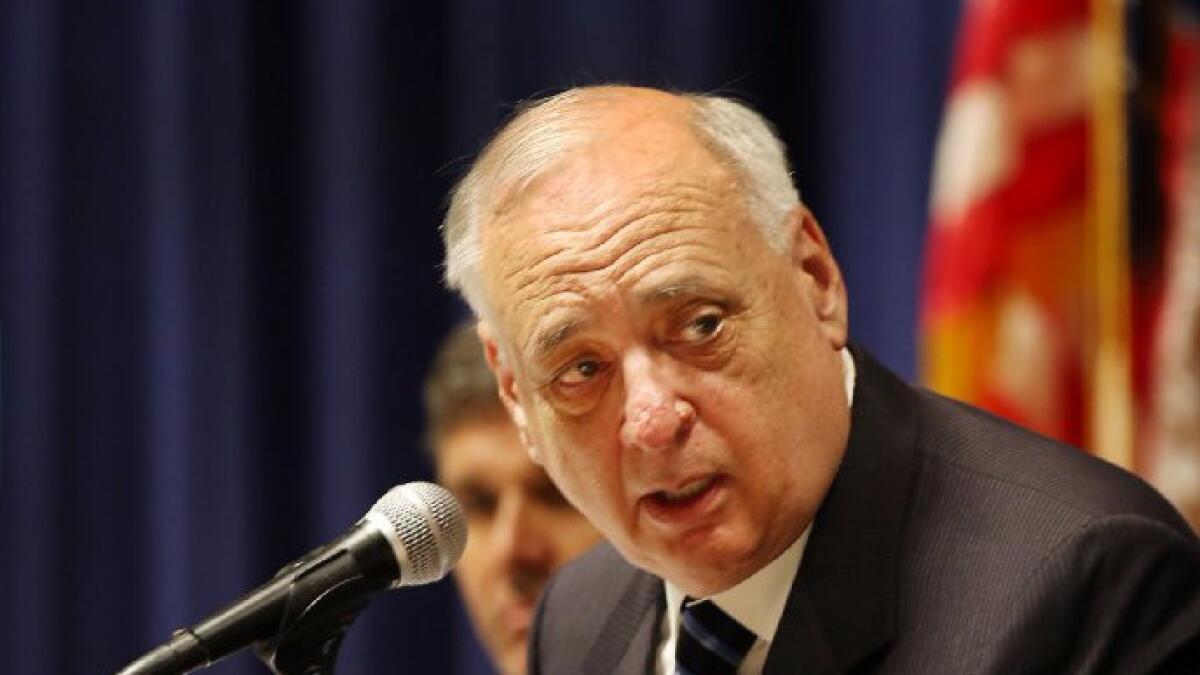Did bullet train officials ignore warning about need for taxpayer money?
When a Spanish firm submitted a bid last year to help build the California bullet train, it cautioned that taxpayer money probably would be needed to keep the system operating.
Having reviewed data on 111 high-speed train lines around the world, construction giant Ferrovial said, it found that all but three could not make ends meet.
âMore than likely, the California high speed rail will require large government subsidies for years to come,â the proposal said.
That warning, however, was expunged from the version of Ferrovialâs proposal posted on the stateâs website. The only record of it was on a data disk provided to The Times and others under a public records act request.
The state rail authority repeatedly has asserted that it will not need a subsidy and that every high-speed system in the world operates without taxpayer assistance â despite significant evidence to the contrary. A number of projects around the world have failed financially, others require direct operating subsidies and many more benefit from government taxes and regulations on competing airline and highway systems, according to audits, studies and interviews.
NEWSLETTER: Get essential California headlines delivered daily >>
But in asking taxpayers to help build the Los Angeles-to-San Francisco line, officials assured the state would be able to pay the operating costs purely from the systemâs revenues â and thus not sap money needed for social services, education or other projects.
When California voters committed the $9 billion in bonds in 2008, the measure stipulated that the system would have to operate without future public funding.
But neither officials nor the law defined what constitutes a subsidy.
It is unclear, for example, whether future interest payments on bonds and other debt that will be paid by taxpayers for the California bullet train amount to an operating subsidy. Those eventually could amount to hundreds of millions â or even billions â of dollars, according to Martin Wachs, a UCLA professor who serves on a state-appointed peer-review panel on the project.
âI donât think it is realistic to argue that doesnât constitute a subsidy,â he said. âI think the citizens of California would be well-served to know whether the system will cover its costs⌠or not.â
Asked about the change in the Spanish firmâs proposal, which came from Ferrovialâs Cintra subsidiary, high-speed rail spokeswoman Lisa Marie Alley said the authority had requested a âclarificationâ because California officials had never before seen the data submitted by the company.
I think the citizens of California would be well-served to know whether the system will cover its costs… or not.
— Martin Wachs, UCLA professor, member of state-appointed peer-review panel on the project
The amended document, which was posted online, removed any mention of foreign system subsidies. Instead, it said California would be unlikely to handle the construction cost of a high-speed rail line without a subsidy, an issue that has never been disputed.
At the time, Ferrovial was bidding to build a 22-mile segment of the rail system south of Fresno. In January, the rail authority announced that the company had submitted the low bid of $348 million and it was later awarded the contract.
The change in Ferrovialâs proposal was first noticed this spring by Morris Brown, a Bay Area resident and former Caltech chemistry professor who closely monitors documents and statements issued by the bullet authority.
Brown said that the passage dealing with subsidies appeared to be the only change to the original document contained on the data disk and the subsequent online version.

In April, rail authority Chairman Dan Richard assured skeptical legislators during a hearing that they shouldnât worry. Assemblyman Jim Patterson (R-Fresno) asked Richard, âDo you know of any high-speed rail operations around the world that make substantial profit?â
Richard answered, âActually all of them, virtually all of them, make operating profit.â He defined that as being able to cover costs after the expenditure of capital to build the systems.
âHa, OK,â Patterson said.
The prohibition on subsidies was pushed in 2008 by former state Senate transportation staffer Art Bauer.
âIt was put in to ensure the high speed rail would be run with discipline, protect the general fund and protect transit operating subsidies,â he said. âThe transit riders are lower income people.â
The assertion that similar systems around the world do not get subsidies is broadly disputed.
âIt is very easy to falsify a claim like âEvery HSR system in the world collects revenues that cover their cost,â said Bent Flyvbjerg, a University of Oxford business professor and one of the worldâs leading experts on bullet trains.
See the most-read stories this hour >>
Flyvbjerg noted that a number of systems became insolvent after starting operations, including the English Channel tunnel train system and Oslo airport train. The Gautrain in South Africa is subsidized, he said. And a national government audit of the Arlanda Express airport link in Stockholm found that agencies had secretly supported the money-losing system.
A 2015 study by Spainâs Foundation for the Studies of Applied Economics concluded that the nationâs massive investments into high-speed rail were not yielding economic benefits to businesses or individuals. Gerard Llobet, the lead author, said in an email exchange that he obtained data showing the systemâs northern line did not cover its operating expenses, separate from repayment of capital.
A study of international high speed rail systems by four Silicon Valley financial experts â including Stanford University emeritus professor Alain Enthoven and former World Bank executive William Grindley â found that Californiaâs system could be among the worst performing in the world.
Its prospective fares would be the lowest on a per-mile basis, driven by a need to compete with the stateâs cutthroat airline market. The California bullet train could only be profitable if it also had the worldâs lowest per-mile costs, roughly one-fourth the typical European system, the report said. But given the costs of doing business in California, that is not likely, Grindley said.
âThe authority,â the report said, âis in a trap of their making.â
ALSO
Dangerous fires, extreme heat across Southern California
Should L.A. roll back its âso-called boycottâ on Arizona?
Maywood residents worry about health hazards posed by nearby industries
More to Read
Sign up for Essential California
The most important California stories and recommendations in your inbox every morning.
You may occasionally receive promotional content from the Los Angeles Times.










